Cardinals are amazing birds that are renowned to be bright striking red! But, are there blue cardinals?
There, unfortunately, are not any blue cardinal birds…so why is it such a popular subject? Well, there are quite a few reasons why people think there are blue cardinal birds.
Let’s learn all about the beautiful cardinal bird, and the colors you can expect to see when out bird watching!
Do Blue Cardinals Exist?
Well, as we previously discussed, no blue cardinals do not exist. Cardinals are known to be red, grey, and yellow. But, never blue, cardinals do not have the right composition to produce blue feathers.
Cardinals just can’t produce the pigment in their feathers which would be required to turn them blue. There could be a pigment abnormality in a cardinal which could change their color from what we see typically.
But, this wouldn’t make them blue but could cause them to be lighter, or washed-out looking. Even though it would be an amazing sight to see a mohawk crested blue cardinal, unfortunately, you can only dream as they don’t exist.
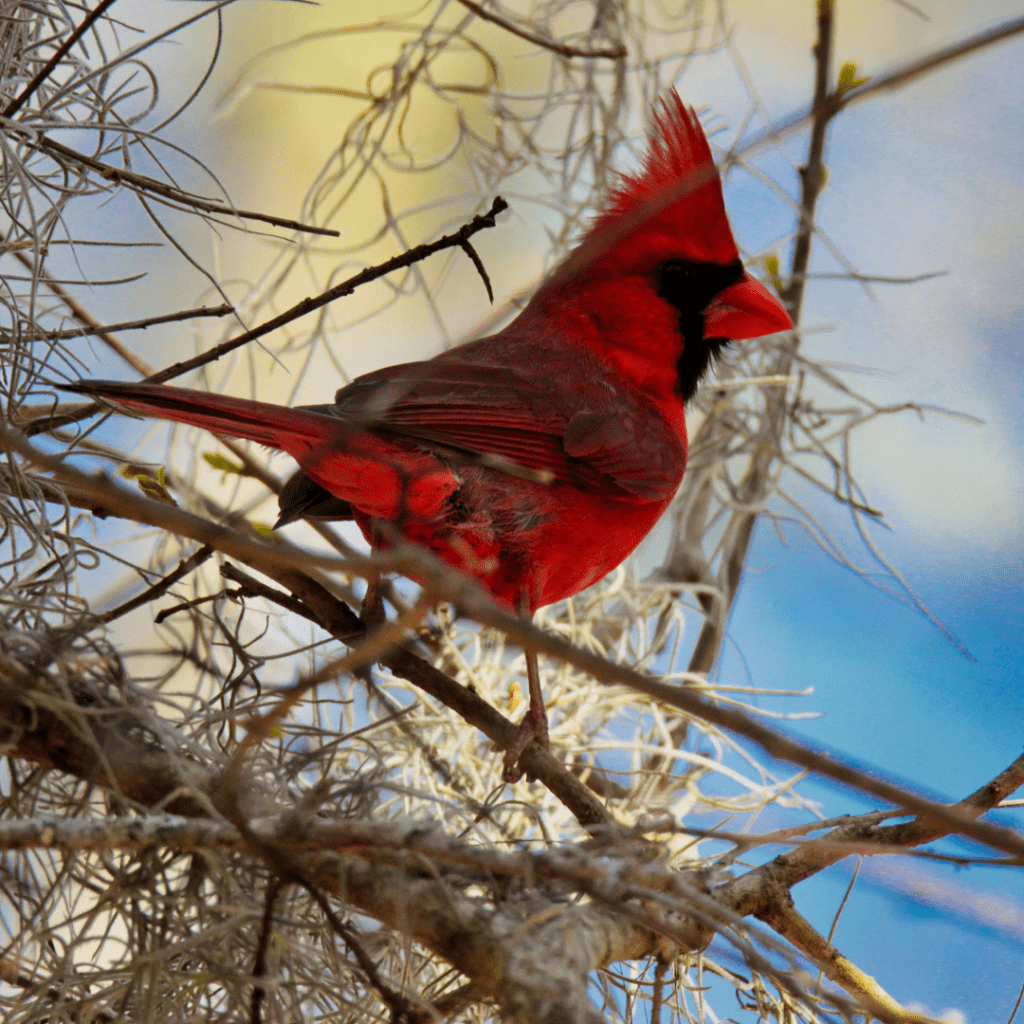
Background on Cardinals

What are Cardinals?
Northern Cardinals (the most popular type of cardinal) are native birds to North America. They can be seen at bird feeders all over eastern to central North America. They have very distinguishable mohawks on the top of their heads and sport a bright red pointed beak.
They use this beak to eat small insects, seeds, berries, and fruits! They are popular birds, but for good reason, they are beautiful with their striking red feathers.
Since they are so well known, ornithologists have studied these birds for years and years, and understand them very well.
Okay, enough about the background of cardinals! Let’s get into the real reason you are here. I am sure you are here because you thought you saw a blue cardinal or were wondering if it was real and they exist.
So then, what colors are cardinals? I already covered this in my types of cardinal article, so I will keep this brief.
There are Primarily 3 different Colors of Cardinals.
Red
I am sure you knew about the red cardinals, they are by far the most popular of the cardinal family and live all over the eastern side of North America. Ranging through Canada, down through The United States, and even going as far south as parts of Mexico!
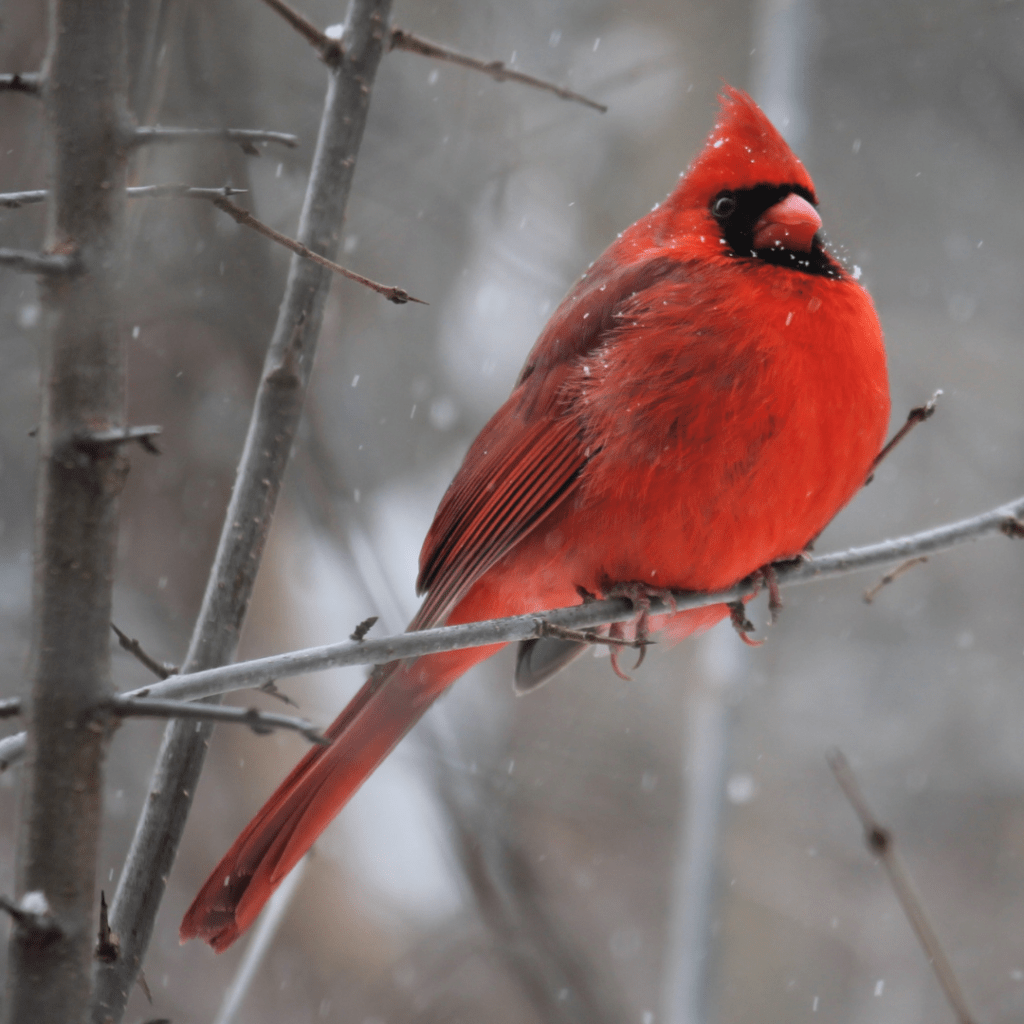
Yellow
This may sound a bit unique, but the northern cardinal can also be yellow. The color of a bird is dictated by its pigments, so if there is an issue with its pigments a bird can be strange, and unique colors.
There have been quite a few reported yellow cardinals, they have the same characteristics as the red northern cardinals, but they are just a different color. They don’t have any disadvantages, but they sure are a sight to see!
Gray
The Pyrrhuloxia or desert cardinal is gray. They are known to be further south into Mexico and Central America. They get their name from the desert climate they live in. They have adapted to their environment very well. They are a light gray which better blends in.
They are not as common as the other species of cardinals, but they are beautiful, and can be seen perched on tall cacti!
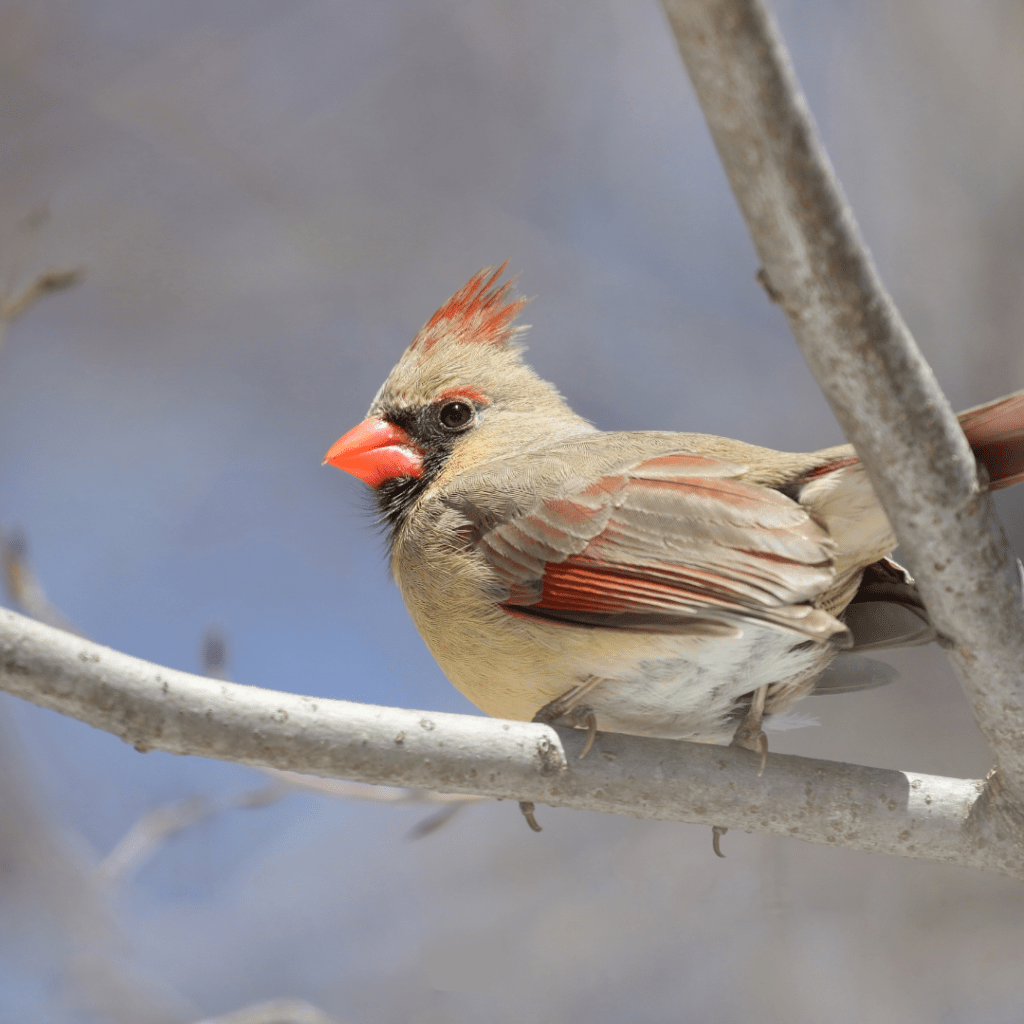
Bonus (white)
There are a lot of different factors that play into the color of a cardinal. The main players in determining a Cardinals feather colors are pigments, carotenoids, melanin, and porphyrins.
All of those big words are out of the way, typically if a cardinal has unusual amounts of any of those they turn white. Just like how an abnormality can cause a red cardinal to become yellow the same goes for white.
Since white is the basic color of anything without pigments especially if there is an abnormality cardinals typically are White or drained of color.
This makes for a beautiful bird that fits perfectly in with the snow! While they are very rare, white cardinals are not unheard of, so keep your eyes peeled, you could find one when you are least expecting it.
What determines the color of a bird?
This may sound like a weird question, but what determines the color of a bird. Yes, genetics and species have a lot to do with it, but let’s learn why birds are the colors they are.
Birds have some of the most complex and beautiful colors and patterns that can be observed throughout nature. So, how do birds develop colorful and detailed patterns?
It all comes down to four main things: Pigments, Carotenoids, Melanin, and Porphyrins. These all play a huge role in the color of a bird’s feathers.
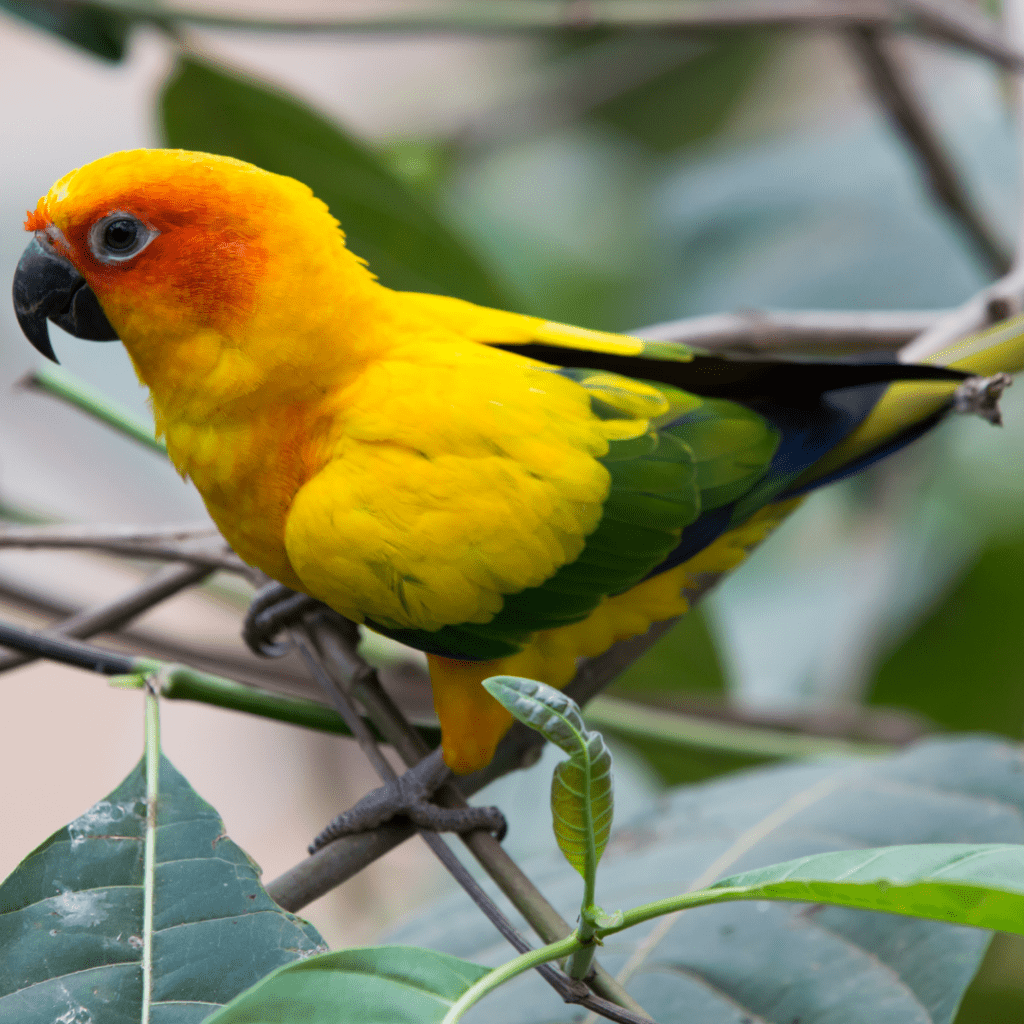
Pigments are determined by Carotenoids, Melanin, and Porphyrins. All living species have pigments, from birds to plants, to lions! These are what determine the color of something.
These pigments are what directly change the color of a feather, but it isn’t the only thing. You can have colors in feathers that are pigment-free as well.
Pigments are chemicals, and they react differently to different wavelengths and types of light. For example pigments in a bluebird reflect blue light and absorb the nonblue wavelengths. This is what makes a bluebird blue!
This goes for all different types of birds. But, it depends on the chemicals in the feathers. Since a cardinal reflects the red wavelengths they aren’t just going to one day reflect the blue wavelengths and be blue cardinals.
What did I see? It looked like a Blue Cardinal
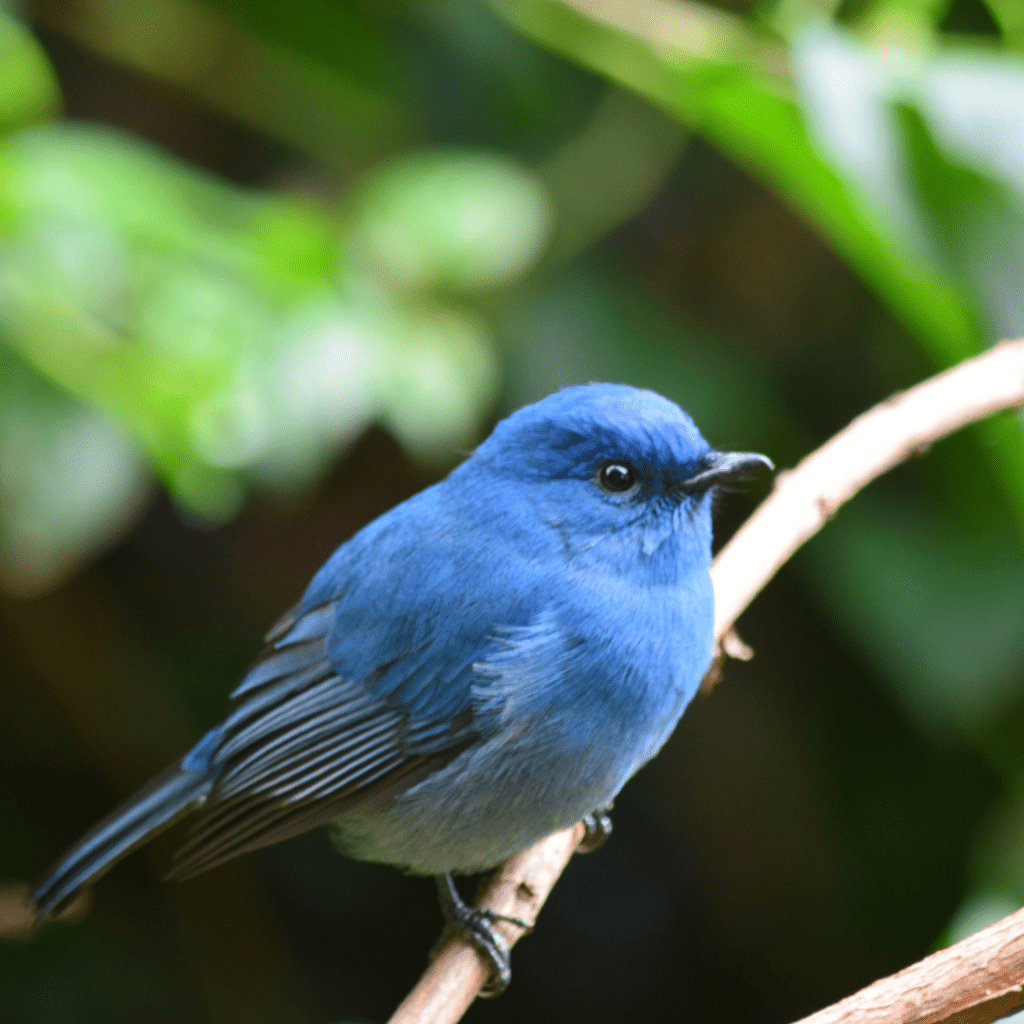
There are many explanations for what you may have seen, as much as I wish blue cardinals were flying around unfortunately there are not.
Cardinals are pretty distinct birds, with their mohawk and round sharp beak it would be hard to miss them. But, as you get further away from them one of the only determining characteristics is their red color.
Even avid birdwatchers can mistake birds, it is really easy to see a flash of color and think you know what bird it was. If you are used to seeing cardinals around your feeder, and then you see a bluebird that is similar in shape it could be easy to mistake it for a cardinal.
Look closely, and you will see that whatever bird you see has some different characteristics than a cardinal. Does it have a mohawk? Look for the red beak, look at its tail feathers. The good news is that cardinals are quite easy to spot and have lots of characteristics known just to them.
Light Reflection
As we discussed previously light plays a huge role in the color of a bird’s feathers. Pigments in their feathers either reflect or absorb different wavelengths of light. This determines what color a bird will be.
If there is obscure light or some shadows and reflections from other sources it can skew the color of the bird. In this case, it could be fairly easy to see a cardinal and have it look a different color than usual.
If you get the right circumstances, it could even look like a blue cardinal. This is one explanation for what you may have seen.
Blue Colored Birds
There are quite a lot of blue-colored birds that are native to the same area as cardinals. Cardinals range a long way across North America, and so do many other blue-colored birds.
Cardinals are medium-sized birds, and many other bluebirds native to the same habitat as cardinals are also blue. This could explain what you may have seen. You could have seen a bluejay, or a blue grosbeak on your feeder and mistaken it for a cardinal.
To prevent making mistakes when identifying birds you can always take photos of them and send them to us, or other bird watchers to help you identify them!
Look a bit closer at the bird in question, they may have different-looking tail feathers, do they have the mohawk that is deciding characteristic of a cardinal?
Blue Grosbeaks
Grosbeaks are native to the southern United States and into the central American continent. These medium-sized bluebirds are known for their songs and their triangular bill that looks somewhat similar to that of a cardinal.
Since they frequent the same places and climates, and theta are a similar size to cardinals many people mistake Blue Grosbeaks for blue cardinals. Remember look for the head feathers before coming to a decision, that is the easiest characteristic of a cardinal.
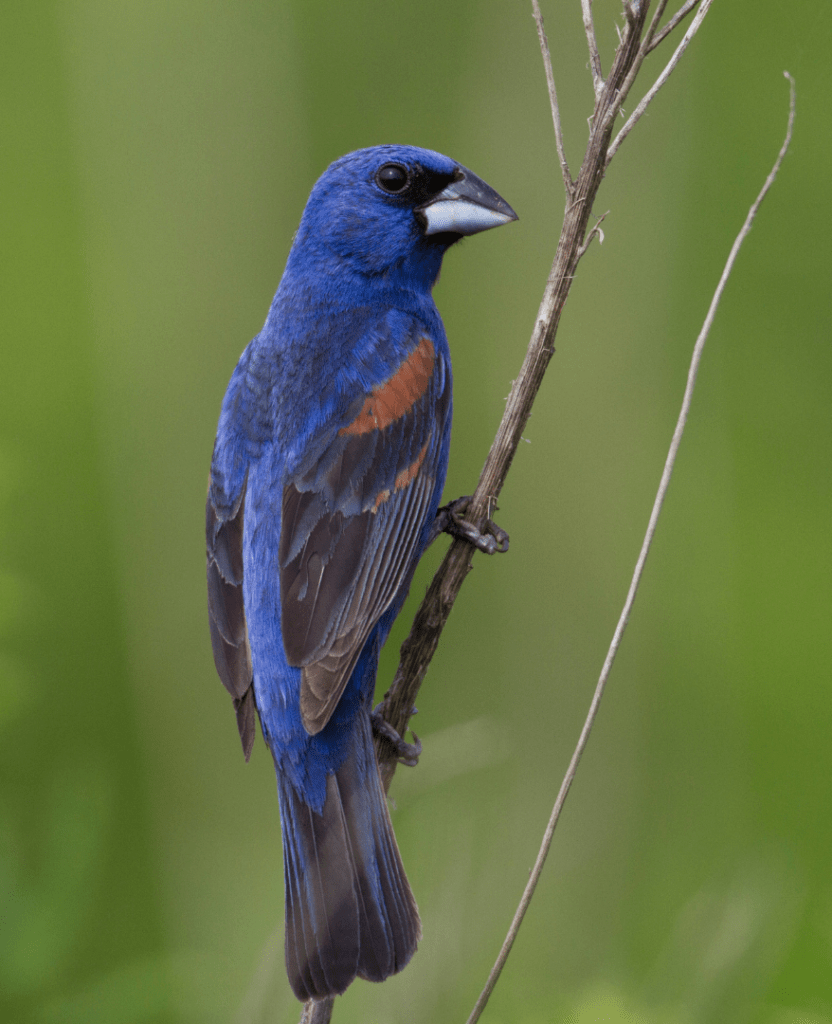
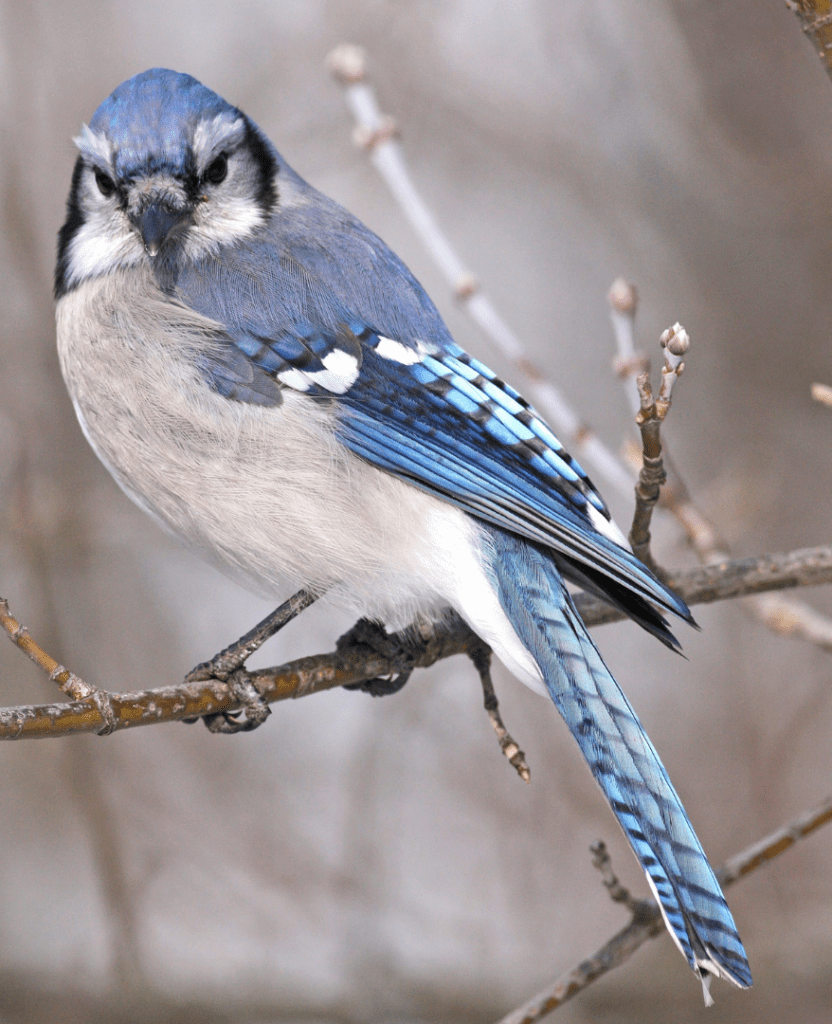
Bluejay
The blue jay is a fast and beautiful part of the jay family. They are known for their striking blue feathers and the intricate pattern on their tails. These birds can sometimes be mistaken for cardinals in bad lighting.
They are quite a bit smaller than your typically cardinal and have many different shaped bodies. But, if you see a bluejay in bad lighting I could see how you could mistake one for a cardinal. Also, some people seem to think that a blue cardinal is a bluejay, nope!
Blue cardinals don’t exist and if you see something that looks like one it may be a blue jay, but a cardinal can’t be a blue jay!
Wrap up
This is quite the question, many people have thought to have seen blue cardinals, but in reality, it must have been another bird unless someone painted a cardinal! Which I would hope for the cardinal’s sake didn’t happen.
Even though the majestic thought of a blue cardinal is quite fun to think about, you won’t be able to find one out in nature as they just don’t exist!
Thank you for reading and happy birding!

James has always been an avid outdoorsman. Since a kid, he kept a journal of all the different birds and species he saw. Now he wants to share his passion with other birders with Happy Birding!
